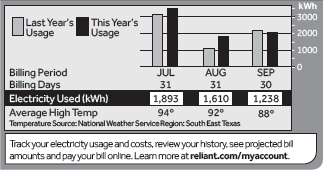
Governments, non-profits, international development agencies, and small and medium enterprises have a role to play in addressing the climate crisis, as do consumers. But if the world hopes to find a solution that will work for climate change, big business will lose fuel for its energy Conroe Energy Rates needs. In developed markets, renewable energy is an important part of the climate strategy of companies, which aim to reduce their carbon footprint – often to meet commitments related to climate change. Companies bought a record 31.1 gigawatts of clean energy through power purchase agreements in 2021, nearly 24% from last year’s record 25.1 gigawatts. A REC is a commodity that shows that one-megawatt hour has been produced from renewable sources. When RECs are purchased, they give their owners the legal right to use renewable energy from renewable sources – without the need to track electricity passing through the power grid. This makes it easier and easier for large companies to invest in renewable energy in developed markets – all the tools and processes are already in place.

But while this growth in developed markets is significant, emerging markets are marginal. Investments in clean and reliable energy systems in these countries, which may have the most carbon-intensive networks, are insufficient. Since these countries often have regulations for renewable energy providers to sell RECs to global companies, they cannot access the financial resources to expand their clean energy generation. This is a missed opportunity because building renewable energy systems in developing economies will have a greater carbon impact than deploying these systems in Europe or North America.
How D-Recs Creates A Global Market For Renewable Energy Distribution.
The D-REC mission is a project to accelerate climate justice and energy transition by reducing barriers to entry that prevent the high-impact distribution of renewable energy in emerging countries by participating in global markets. The focus is on distributed renewables. Distributed renewable energy systems – in which electricity is generated from sources located at or near the point of use, rather than sources such as power plants – are well-suited for rural communities around the world. They are easy to deploy and cost less, and they don’t require a lot of support infrastructure like transmission lines. As a result, these off-the-shelf systems are very attractive to markets with limited access to energy. To support the development of these systems, the D-REC initiative is building a digital platform for Distributed Renewable Energy (D-REC) certificates, with each document representing one kilowatt-hour (kWh) of Electricity generated from distributed renewable energy. strength. a power source (or multiple sources). These certificates allow producers of renewable energy projects to justify each kWh of electricity produced by their projects. The platform uses open technology to first measure and analyze the electricity produced by the underlying projects and then generate and support D-REC to capture the positive environmental qualities associated with the production. Renewable energy providers can earn these D-RECs by selling them to companies that include them in their sustainability reports. The US Energy Information Administration publishes the calorific content of natural gas delivered to consumers in each state. Ethane is not only consumed by the petrochemical industry but so are all natural gas consumers in the United States to some extent.
